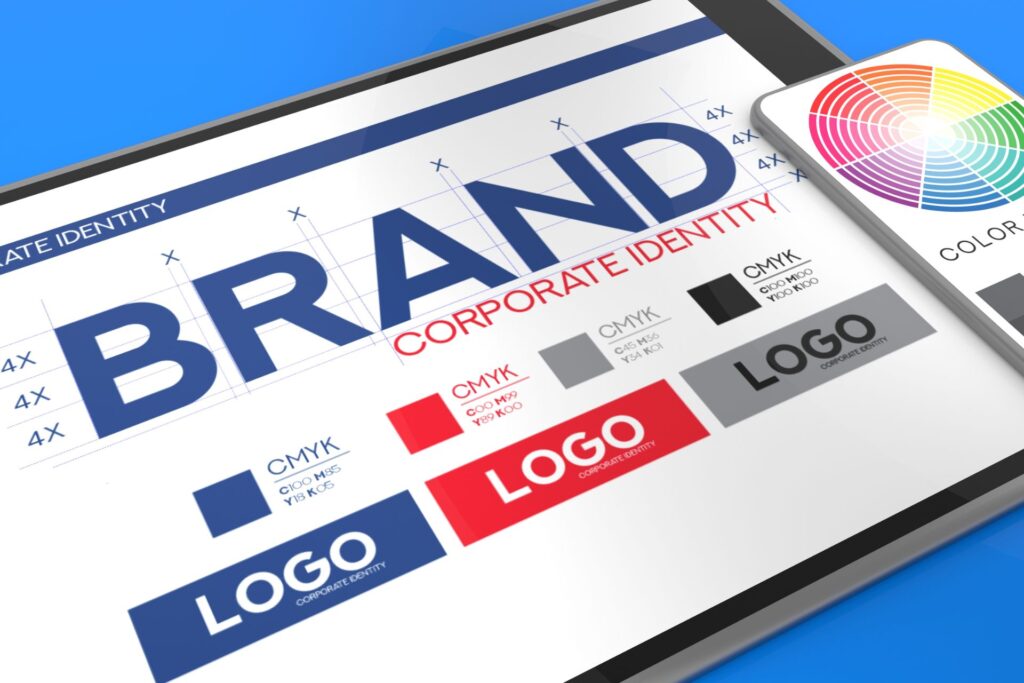Ever landed on a website or social media page and felt confused? The logo looks different from the Instagram page, the colors don’t match the ads you saw yesterday, and the fonts seem all over the place. You might even wonder if you’re even in the right place. This disjointed experience often leads to doubt and doubt kills trust.
If you’ve struggled with making your brand look “put together,” or noticed your audience not really connecting, you likely have a visual consistency problem. Practical implementation often trips brands up, especially when coordinating multiple teams or channels. Without a clear system in place, inconsistency creeps in, and that’s when trust breaks down, often before anyone reads a word.
What Is Visual Consistency (And Why Should You Care)?
Visual consistency means your brand’s colors, fonts, logo usage, imagery style, and overall look and feel are uniform across every platform and interaction. It is the silent way your brand says, “We’re reliable and professional.”
Research shows that 81% of consumers need to trust a brand before buying from it. And trust? It often starts with visuals—your first impression count happens in less than a second, largely based on what people see.
How Visual Consistency Builds Brand Trust: Real Examples
- Colors Matter: A signature color can increase brand recognition by up to 80%, and 90% of snap judgments about products relate to color alone. Think about Nike’s soothing black and white compared to Tiffany’s instantly recognizable robin’s egg blue.
- Typography Talks: Sans serif fonts dominate in the top brands because they feel modern and clean, helping brands appear approachable and trustworthy.
- Logo Usage: Consistent logo placement and version use across all assets send a message that a brand is professional and organized.
Common Challenges and How to Overcome Them
1. Implementing Visual Consistency Across Teams and Channels
- Use cloud-based platforms like Google Drive, Dropbox, or brand management tools such as Frontify or Canva Brand Kit to store official logos, color hex codes, approved fonts, iconography, and image style guidelines.
- Designate one person or team responsible for maintaining and updating this library, so all team members, freelancers, and partners access the latest assets.
- Hold regular workshops or provide video tutorials on how to use brand assets correctly. This is part of our unique approach to cohesive branding.
2. Maintaining Consistency Across Diverse Platforms
- Develop platform-specific style guides with examples for social media posts, website banners, email templates, print materials, and ads.
- Use or customize branded templates on tools like Canva, Adobe Express, or email platforms like Mailchimp and Klaviyo to ensure the same fonts, colors, and layouts are applied.
- Regularly audit published assets and provide feedback to teams or agencies when inconsistencies arise.
3. Evolving Your Brand Without Losing Trust
- Outline which visual elements will change (logo, colors, fonts) and the timeline for updates.
- Roll out changes all at once across channels to prevent mixed messages and confusion.
- Communicate changes with your audience via newsletters or social posts explaining the “why” behind updates to keep them informed and engaged. See our social media community building strategies to build inclusivity.
4. Working With Limited Resources
- Use free or affordable tools such as Canva for design creation and pre-built brand kit features for asset organization.
- Start small by focusing on key touchpoints like websites and email, then expand consistency efforts gradually.
- Leverage checklists and templates to avoid reinventing the wheel for each asset, saving time and ensuring visual alignment.
5. Ensuring Accessibility and Inclusivity
- Use tools like WebAIM Contrast Checker or Adobe Color to ensure text-to-background color contrast meets accessibility standards (WCAG 2.1 AA).
- Choose readable fonts sized appropriately across devices and avoid overly decorative script fonts for body text.
- Include alt text on images and make sure interactive elements are operable via keyboard for users with disabilities.
6. Measuring and Adjusting Visual Impact
- Collect qualitative feedback through surveys or social listening to understand how your audience perceives your visuals.
- Perform A/B tests on email or ad creatives with varied visual elements to monitor engagement rates.
- Use brand-tracking studies or analytics tools to measure brand recognition and consistency over time, adjusting guidelines as needed.
Examples of brands with strong visual consistency
- Coca-Cola: For over a century, Coca-Cola has consistently used its iconic red-and-white color scheme and Spencerian script logo. This unwavering visual identity has made the brand instantly recognizable and helped it build immense loyalty and trust with consumers worldwide.
- Apple: Apple’s minimalist design, clean lines, and consistent color palette convey a powerful and focused brand image of innovation and quality. Every product, ad, and retail store reflects this aesthetic, reinforcing a clear and trusted identity.
- Nike: Nike’s “swoosh” logo and “Just Do It” slogan are consistently used in marketing materials, creating a powerful, recognizable brand image. This cohesion has made the brand’s logo synonymous with performance and quality, creating a strong sense of trust.
Why Visual Trust Equals Business Growth
Consistency doesn’t just build trust, it translates into revenue. Brands with disciplined and consistent visuals report 10-20% higher growth and premium pricing power. Emotional connection through visual identity increases customer lifetime value and word-of-mouth recommendations.
Final Thoughts
Your brand is more than a logo or a color palette—it’s the promise you make to your customers. Visual consistency is the handshake, the first smile, the warm welcome that builds that promise into genuine trust.
At Spark Collective, we specialize in crafting those visual experiences that stick, connect, and convert. Because in a crowded marketplace, looking trustworthy is the first step to being trusted.
Ready to build a visually consistent brand that your customers instantly trust?
Contact us today and let’s make your brand unforgettable.

